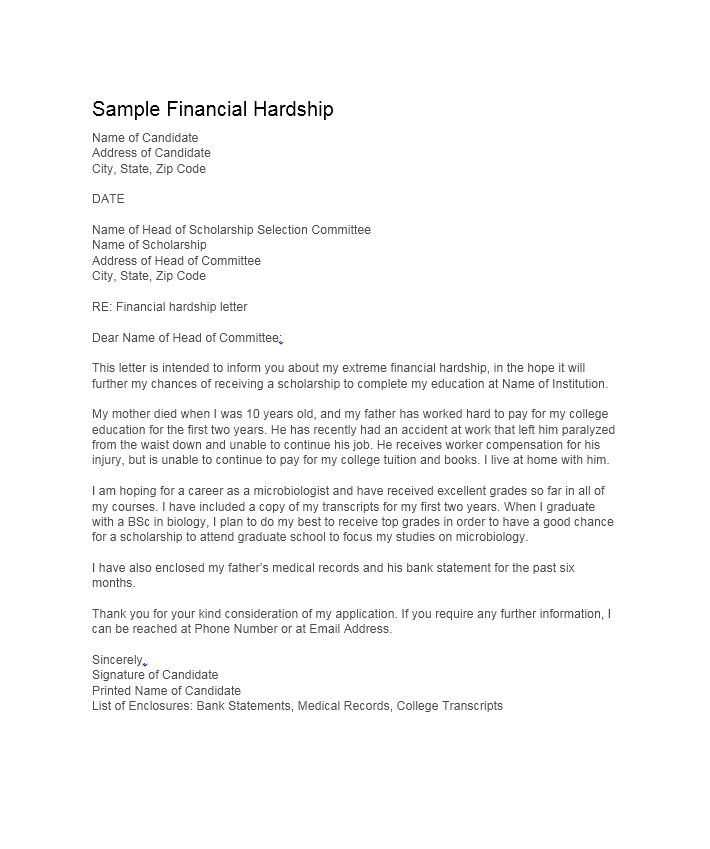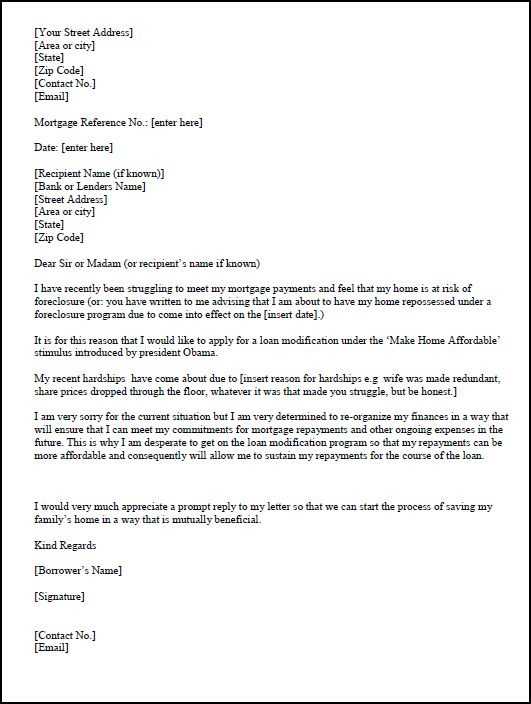Effective Hardship Letter Templates for Financial Relief

When facing unexpected challenges, people often need to communicate their struggles to institutions for assistance. A well-written request can make a significant difference in receiving the support you need. Crafting such a request involves clearly explaining the situation, expressing the need for help, and providing necessary details to strengthen your case. A clear, sincere approach increases the chances of a positive outcome.
Key Elements of a Successful Request

To ensure your request is taken seriously, it’s important to include specific information that demonstrates the severity of your situation. This includes the reason for your financial difficulty, any steps you have already taken to resolve the issue, and how assistance would help you overcome the current circumstances.
- Personal Situation: Briefly explain the factors that have contributed to your current financial difficulties.
- Request for Relief: Specify the type of support you need and how it will address the challenges you’re facing.
- Supporting Documentation: Include any relevant records that can back up your claims, such as medical bills or job termination notices.
Crafting a Clear and Concise Message
One of the most important aspects of any request is clarity. Your message should be straightforward and easy to understand. Avoid overly complex language and focus on being direct while remaining polite and respectful.
Customizing Your Request to Fit the Situation
Each request should be tailored to the recipient and the specific circumstances. Whether you’re reaching out to a creditor, employer, or government agency, make sure your communication is aligned with their guidelines or requirements. Personalizing the content shows that you have taken the time to craft a thoughtful request.
Examples to Guide Your Approach
Reviewing sample requests can help you understand the proper tone and format. Below is a general structure that can be adapted to suit various needs:
- Introduction: Start by briefly explaining your situation and why you’re making the request.
- Details: Provide specific information about the challenge you’re facing and how it has affected your ability to meet obligations.
- Conclusion: Reiterate your request for assistance and express appreciation for the consideration.
By following these guidelines, you can create a compelling and effective appeal for help during difficult times.
Understanding the Purpose of Requests and How to Make Them Effective
In times of financial strain or personal difficulties, reaching out for support becomes necessary. A well-crafted request can help communicate the need for assistance in a clear and respectful manner. The goal is to explain your situation, make a case for why support is required, and provide enough context to encourage a favorable response. Knowing what to include and how to present it is crucial for success.
Key Information to Include in Requests
When composing a request, certain details are essential to make it compelling. Be sure to include a brief explanation of the issue you’re facing, its impact on your daily life, and the type of assistance you’re seeking. Additionally, provide relevant documentation to support your claims, such as medical records, employment status updates, or any financial statements that highlight your need for help.
Steps for Writing a Clear Request
To ensure your message is understood, follow a structured approach. Start with an introduction that explains the reason for your appeal. In the body of your request, describe the situation in clear terms, focusing on how it affects your ability to meet obligations. Finally, close with a polite and respectful conclusion, reiterating your request and expressing gratitude for the consideration of your situation.
Avoiding Common Errors in Requests
One of the most common mistakes is providing insufficient detail, which can make your request less persuasive. Avoid vague statements and ensure you clearly explain the circumstances leading to your need for support. Additionally, remember to check for errors in spelling and grammar, as well as ensure your tone is respectful and professional throughout.
Samples and Formats for Effective Requests

Reviewing examples of successful requests can offer insight into how to structure your own. These samples can provide a template to follow, but it’s important to customize them to reflect your unique situation. Ensure that the format is clear, concise, and aligns with the requirements of the organization or individual you are reaching out to.
How to Customize Your Request Effectively
While templates can be helpful, personalizing your request is key. Tailor the language to suit the specific recipient and context, ensuring the tone aligns with their expectations. Highlight the most relevant aspects of your situation that resonate with the type of assistance you’re requesting, and express your willingness to provide any further information if needed.